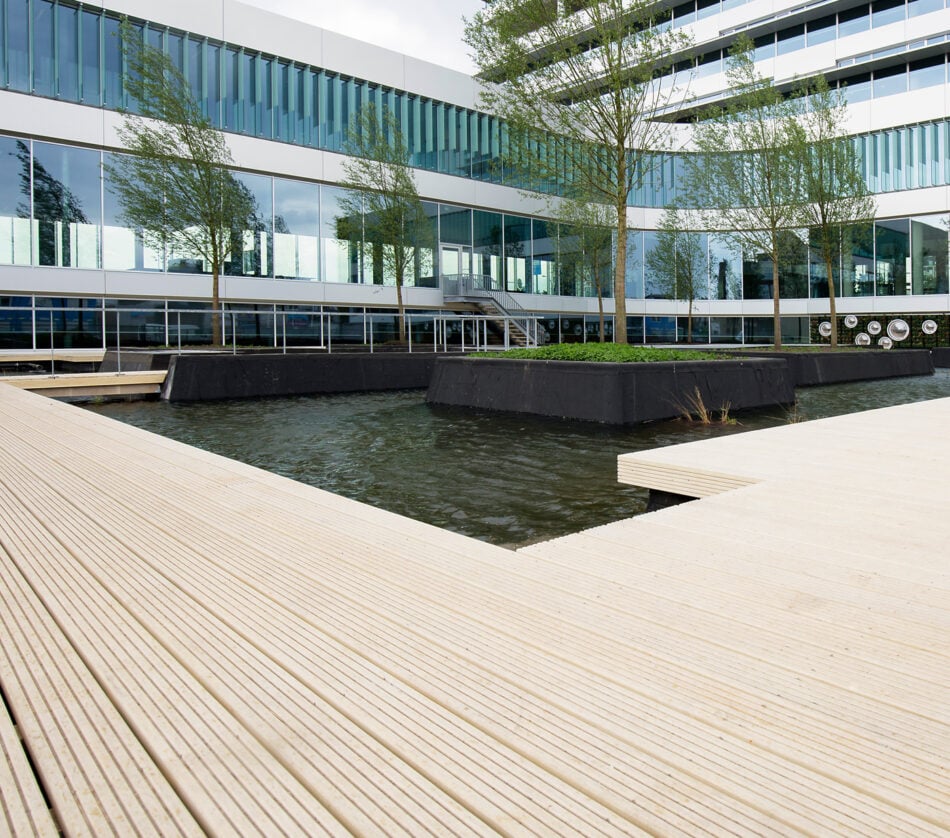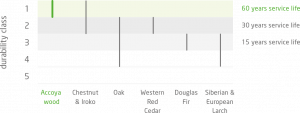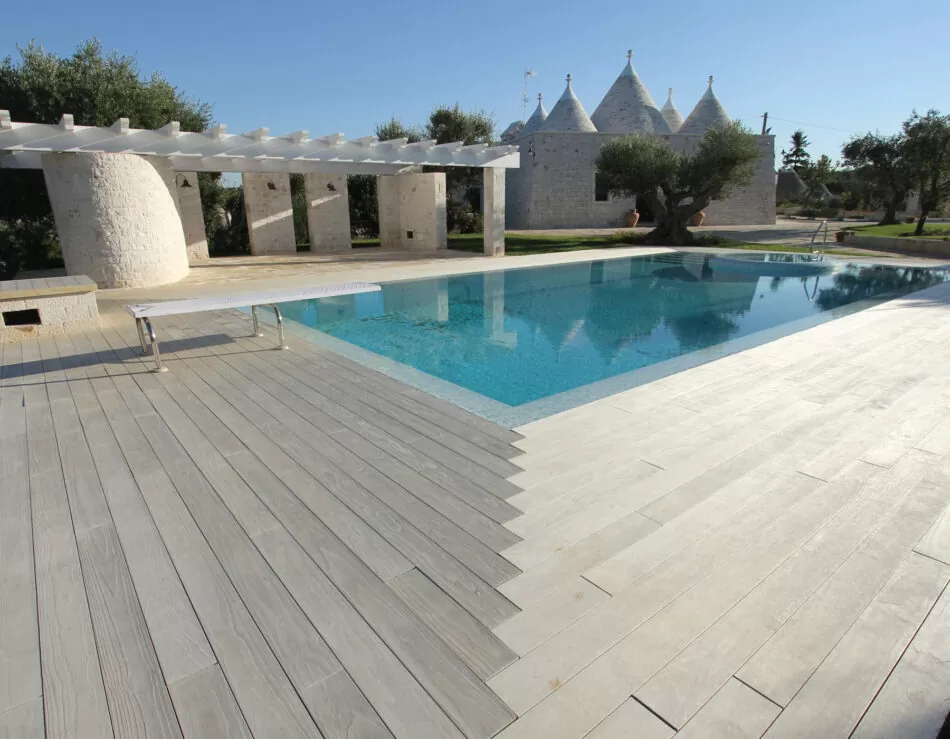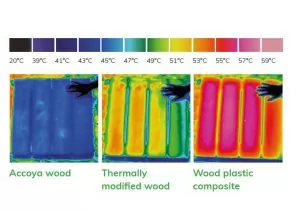
What is the best timber for decking?
19.09.2018

Things to consider when choosing timber for decking
Durability
Different timbers have varying levels of natural durability and we are often faced with the question, “which is the best wood that does not rot?” The timber species whether softwood, hardwood or modified timbers does not always indicate whether a type of timber is suitable for use as decking. The Timber Decking and Cladding Association recommends that the choice of deckboard should have a minimum service life of 15 years, and should be rated as moderately durable (durability class 3) at least for above ground use and durable (durability class 2) for ground contact use.

*From EN 350:2016. Durability Class is quoted for heartwood only, the sapwood of any species is susceptible to decay unless treated or modified to protect against biological attack.
**From AS 5604-2005

Timber Decking Appearance
Timber decking designs not only depend on the shape and size of your deck but also the aesthetics. Softwood decking is usually treated with a high pressure preservative that gives the wood a green hue before weathering over time to a grey.
Hardwood decking offers a range of rich, natural colours from golden, light brown up to rich mahogany.
Accoya timber decking is a pale, light straw colour but can be easily stained to create the finish you desire. Due to the improved stability of Accoya wood, coatings can last up to two times longer.
Installation and Maintenance
Softwood timber decking is easy to install. It is recommended to always fix with screws to allow for easy replacement of boards, and it is essential that any cut ends are treated with an end-grain preservative to avoid rot and decay. Maximising the service life of a softwood deck requires more maintenance than other wood types with regular cleaning, and reapplication of preservatives.
Before installing hardwood decking, consider allowing boards to acclimatise as moisture content can vary. Boards can shrink and swell, therefore a gap of approx. 5mm should be left between boards (or roughly the size of a pencil!). Hardwood decking timbers can be very dense and it is recommended to pre-drill boards before fitting screws. It will take longer to install than a softwood deck, and a robust power tool is recommended.
As Accoya wood decking is slightly acidic, like most durable woods, it is recommended to use A2 (general applications) or A4 (for seacoast exposures) stainless steel. To ensure a durable and lasting fixation, timber for decking should be fixed with at least 50 mm clearance to the end of the board (use self-drilling screws or pre drill the hole to 1 mm less than the shank diameter). Due to its dimensional stability, Accoya deckboards will not shrink and swell and cause damage around fixings, or splinter so it can be classed as barefoot friendly.
Thermal Gain
A commonly asked question with regards to timber decking is, how hot will it get in warm climates?
Thermal gain on decks and terraces is a particular issue in the summer season. When designing your deck, particularly around pool areas, it is important that the deckboard is barefoot friendly.
A thermogram image analysis was arranged in Japan with the Hiroshima Prefectural Technology Research Institute to assess differences between Accoya, thermally modified wood and three variants of commercial WPC decking.
The ambient temperature during the temperature of all decks was 32°C. Deckboard dimensions were comparable for all three types:
- Accoya 26 x 140
- Thermally Modified Wood 26 x 140
- WPC 25 x 145
The thermograms clearly indicate a thermal gain in Accoya is substantially less than the alternatives tested.

Timber Decking Sustainability
Choosing wood for your decking material is a more sustainable option than wood plastic composite.
Why is wood sustainable?
Forests act as an important carbon sink by absorbing CO2 in the biomass of the tree and the resulting wood products. For maximum CO2 sequestration, it is actually advised to harvest sustainably managed forests/plantations for the production of durable products. The longer the lifespan of these products, the longer they can act as additional carbon stores while providing the forest the opportunity to regenerate and produce new biomass (acting as new carbon sink).
Supplies of certified tropical hardwoods are limited, resulting in illegal logging which, in turn, leads to the rainforest deforestation. In contrast, Accoya uses a fast growing temperate, softwood species, Radiata Pine, from sustainably managed forests (FSC® certified), and due to the high yield and long life span is more efficient at locking away CO2 for longer. It is important to look for timber decking that carries the approval of a certification body such as PEFC® or FSC®.

Where to Buy
You can buy Accoya and Accoya products from our selection of distributors or manufacturers in your region. Use our map search tool to find your nearest Accoya supplier.
WHERE TO BUY ACCOYA
for your next projectWhat type of Product are you interested in?
- - Select product type -
-
FIND A SUPPLIER
FIND A INSTALLER
for your next projectWhat type of are you interested in? (optional)
How will your be used?
- - Select type -
-
You are currently on the Accoya site
Would you like to visit the Accoya Site to view all relevant content for your location?